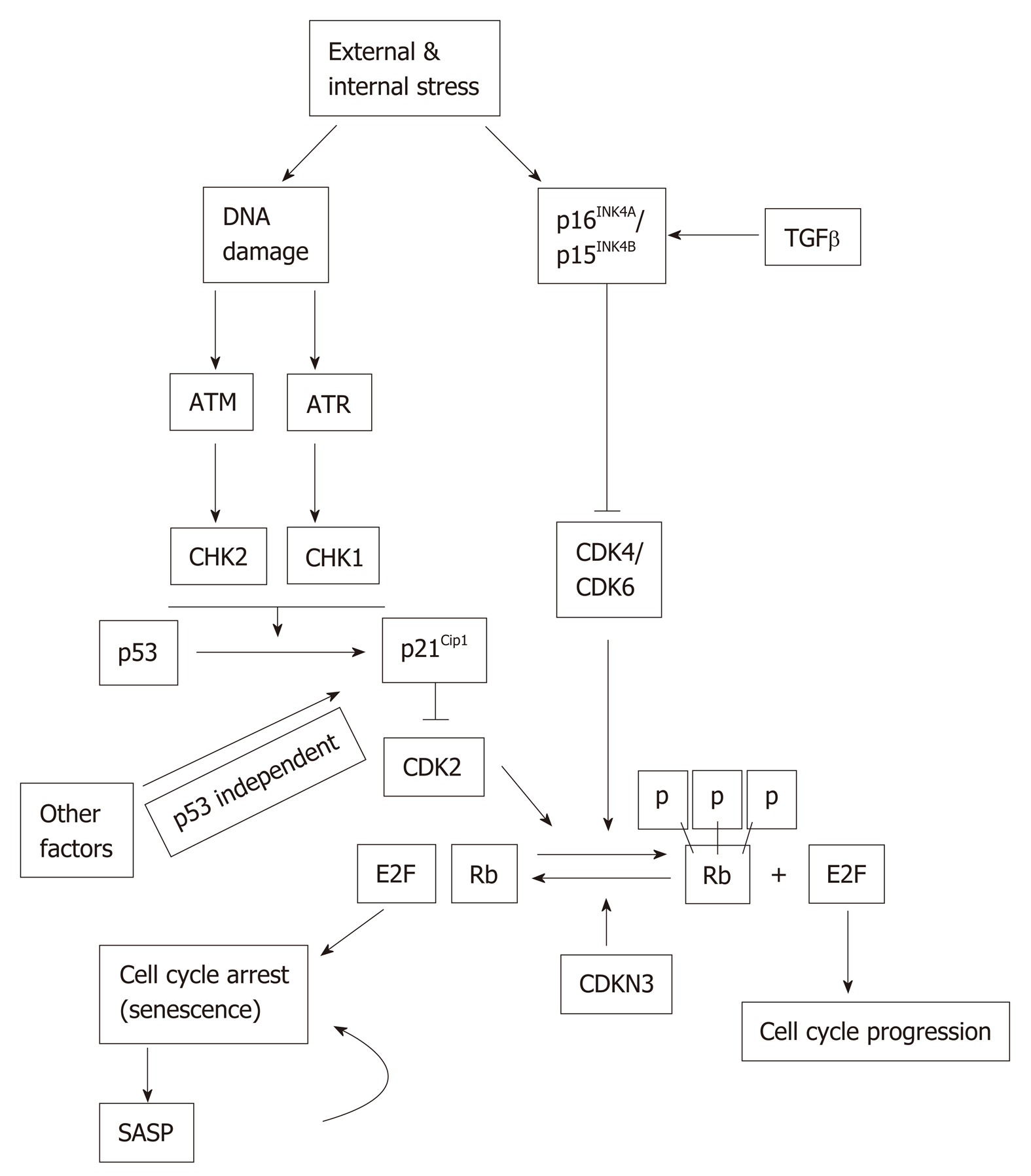Copyright
©The Author(s) 2019.
World J Gastroenterol. Sep 14, 2019; 25(34): 5069-5081
Published online Sep 14, 2019. doi: 10.3748/wjg.v25.i34.5069
Published online Sep 14, 2019. doi: 10.3748/wjg.v25.i34.5069
Figure 1 Stress-induced senescence.
Both external and internal stresses can induce DNA damage and the activation of p16INK4A and/or p15INK4B. DNA damage can activate p53 ataxia telangiectasia mutated (ATM) and ATM and RAD3-related (ATR) pathway. Activated p53 induces p21 Cip1 expression. Expression of p21Cip1 can also be regulated by p53-independent mechanisms. The Cyclin dependent kinases activate Rb but are inhibited by p15INK4B/ p16INK4A and p21Cip1 which leads to cell cycle arrest and senescence. The senescent cells express senescence-associated secretory phenotype (SASP). The SASP factors may induce senescence in neighboring cells in a paracrine fashion. ATM: Ataxia telangiectasia mutated; SASP: Senescence-associated secretory phenotype.
- Citation: Huda N, Liu G, Hong H, Yan S, Khambu B, Yin XM. Hepatic senescence, the good and the bad. World J Gastroenterol 2019; 25(34): 5069-5081
- URL: https://www.wjgnet.com/1007-9327/full/v25/i34/5069.htm
- DOI: https://dx.doi.org/10.3748/wjg.v25.i34.5069









